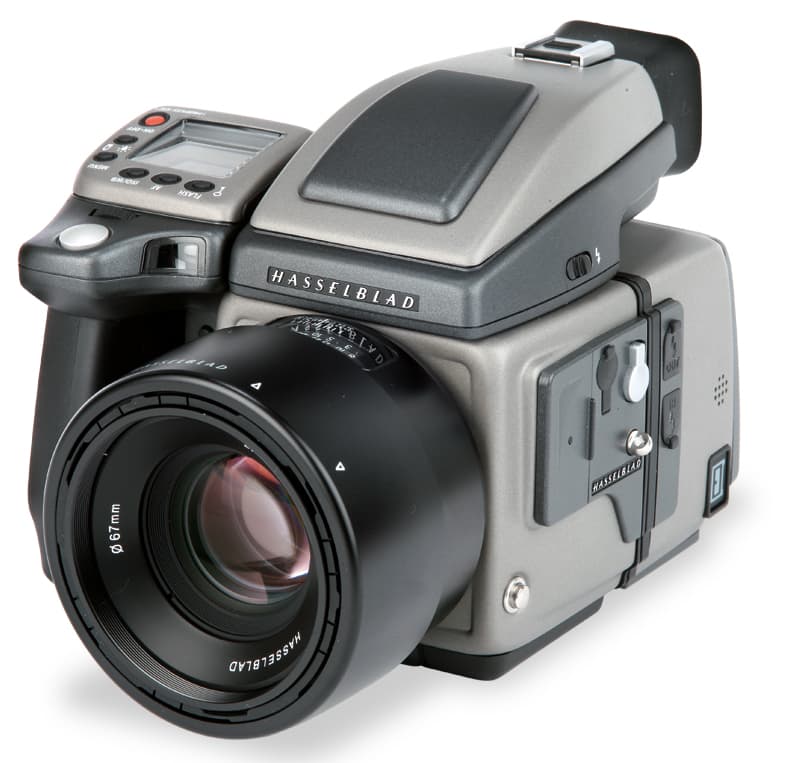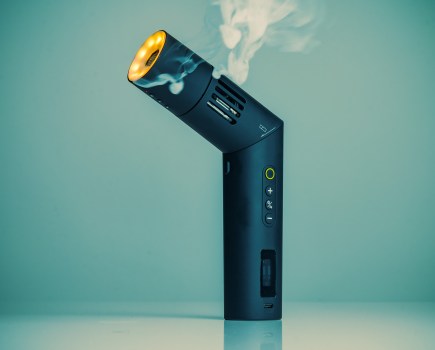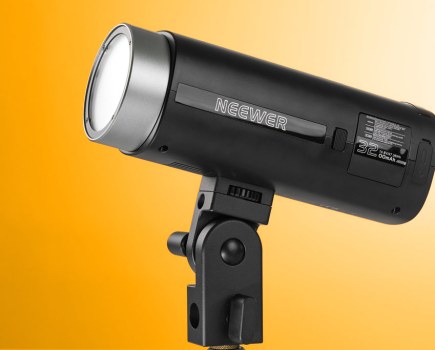Hasselblad H4D-31 at a glance:
- 31-million-pixel CCD sensor (33.1×44.2mm)
- 3in, 230,400-dot screen
- Lossless 3FR raw shooting (around 40MB)
- ISO 100-1600
- CompactFlash memory
- Street price £9,500 (body including sensor back and HVD 90x viewfinder)
Hasselblad H4D-31 review – Introduction
There is a definite divide, a line in the sand as it were, between those who shoot medium format and those who choose a 35mm-type camera: both formats are used by professional photographers for their different merits, but the mindset appears to be different. The 35mm users were quicker to swap over to digital imaging as they are often driven by the speed at which they can take an image over the quality.
However, as high-end professional DSLR models with full-frame 35mm sensors reached higher resolutions, even some medium-format users traded in their cameras and made the switch. For sports and press photographers the benefits are obvious, but even landscape photographers opted for the more compact form of the SLR over the larger bodied medium-format models.
Medium-format cameras essentially offered an easier upgrade to digital imaging than their 35mm-style cousins. This was due in many cases to the film back being a separate part, which meant that a digital back could simply be fitted in its place. However, this came at a huge cost and often produced images of much lower resolution than was possible by scanning a negative. Digital SLRs also added more than just the sensors, with advances made to metering, autofocus and burst modes that improved the performance and usability of the cameras.
Hassleblad offered the first digital version of its H1 camera in 2004, and although still a modular system, it included a 22-million-pixel back. The latest range of H4D cameras was introduced in 2009, initially with a 50-million-pixel or 60-million-pixel back. At the photokina show in Germany last year, the company announced the 31-million-pixel H4D-31, pitched as an entry into the Hasselblad system and in direct competition with Pentax’s long-awaited digital medium-format 645D.
Features
 The principal advantage of a medium-format-type camera comes from the quality it is able to deliver, and this is a result of the optics and sensor. Compared with a full-frame 35mm-style DSLR sensor, the 31-million-pixel CCD on the H4D-31 has a surface area roughly 1.7x larger and, despite the higher pixel count, still has physically larger photosites than those of either the Nikon D3X or the Canon EOS-1Ds Mark III professional-level cameras. Files are saved in Hasselblad’s native 3FR raw format with a compressed size of roughly 40MB per image, which is a lossless compression that is claimed to reduce required storage space by 33% compared to Adobe’s DNG format.
The principal advantage of a medium-format-type camera comes from the quality it is able to deliver, and this is a result of the optics and sensor. Compared with a full-frame 35mm-style DSLR sensor, the 31-million-pixel CCD on the H4D-31 has a surface area roughly 1.7x larger and, despite the higher pixel count, still has physically larger photosites than those of either the Nikon D3X or the Canon EOS-1Ds Mark III professional-level cameras. Files are saved in Hasselblad’s native 3FR raw format with a compressed size of roughly 40MB per image, which is a lossless compression that is claimed to reduce required storage space by 33% compared to Adobe’s DNG format.
The camera produces a 4872×6496-pixel image, which equates to a 16×21.5in print at 300ppi, or just shy of an A2 paper size. Not having the ability to output an accompanying JPEG file will seem a little strange to a 35mm-style DSLR user, but it means that heavy processing can be saved for the PC or Mac.
The camera allows an ISO range of 100 to 1600, which is more than sufficient for most shooting situations on this type of camera. The capture rate is around 0.7 frames per second, or 42 frames per minute – time enough for the flash heads to refresh between shots. The H4D-31 uses compact flash for storage and can make use of the full 90MB/s transfer speeds of the Extreme Pro cards. It also features a FireWire 800 connection to allow the camera to be tethered directly to a computer and save images straight to the hard drive.
Hasselblad H-series cameras are modular in their make-up. This means that the included viewfinder can be swapped for a waist-level chimney finder, a GPS receiver can be added, and the sensor unit can even be detached and then reattached to any view camera with a Hasselblad H adapter. There are currently 11 H-series lenses ranging from 28mm through to a 300mm f/4.5 (an equivalent of roughly 22mm and 240mm on 35mm format respectively), all with autofocus. C-type lenses from the V system can also be mounted using an optional CF lens adapter. The sample we used came with the 35-90mm f/4-5.6 HCD and Macro 120mm f/4 HC lenses.
The H4D-31’s metering system offers a choice off spot, centreweighted and centrespot, but no sign of a full evaluative mode. The interesting part, though, comes in the camera’s focusing. The autofocus is a single-point system but comes with a few tricks up its sleeve, namely a new AF assist light and a facility called True Focus. When shooting with a shallow depth of field, focusing with the centre point and then recomposing can result in a slight change in focus distance as the camera is tilted. The Absolute Position Lock processor features sensors to detect the angle of the camera and adjust the focus if needed. This allows the subject to remain at its sharpest.
The shooting modes allow a choice of PASM settings, but the camera also allows you to load and save profiles that control a wide range of the features, much like custom modes. Built into the viewfinder module is a pop-up flash – a very unusual but welcome addition to such a professional camera, and great for adding fill-in or triggering other flash heads.
Performance and handling
 The 31-million-pixel sensor is capable of resolving super-fine detail, while the True Focus system ensures that the precise focus point is maintained even when recomposing
The 31-million-pixel sensor is capable of resolving super-fine detail, while the True Focus system ensures that the precise focus point is maintained even when recomposing
Medium-format cameras are big and heavy, and the H4D-31 is no pocket-sized model. It weighs around 2.3kg with the 80mm lens, which is about 200g heavier than a Nikon D3X with a 24-70mm lens, yet it is surprisingly comfortable to handhold. The grip is exceptionally deep, allowing you to get a really solid hold, and the camera balances well with a decent piece of glass on the front.
The grey plastic finish, however, feels a little cheap – unlike the new stainless-steel edition of the H4D-40. Whereas Pentax’s latest medium-format offering, the 645D, has brought a more consumer DSLR-like layout to the buttons, the buttons on the H4D-31 feel like they have been added almost at random. This is perhaps due to the H4D-31’s progression from earlier models, and the company not wanting to make too many changes for long-time Hasselblad fans, but for a 35mm-style user their positioning seems less than organised. The buttons themselves are also small and rubberised, much like the small buttons on a remote control. The control dials, however, are well placed at your thumb and first finger, to allow quick adjustment of settings.
The menu system is also a little disordered, due to it being divided between a menu within the top-plate LCD and the rear screen on the sensor unit. The latter menu allows adjustment of white balance, ISO and card formatting, while the former menu provides the autofocus, flash, shooting mode and metering settings, among others. One saving grace here is that once your camera has been set up to how you like to shoot, there is little reason to enter the menus in any depth, especially with the aid of the profiles.
While a lack of multi-point AF, tracking modes and the like can make the H4D-31 seem primitive, its focusing is functional and fast. The AF beam for low-light focusing is pretty powerful and had no problem finding pinpoint accuracy in some really dark locations. The True Focus arrangement is certainly very clever and its motion-detection technology has more in common with a Nintendo Wii games controller than a professional camera. It seemed to do the job and, as proof, my images were extremely sharp when using it.
Image quality

Indoors, the tungsten balance (middle) maintains a slightly warm glow from the light for a more natural scene
For my outdoor shoot with the H4D-31, I used a Profoto flash kit with B3 battery pack, a single head and dish reflector, triggered with an Air Sync remote, all hired from the Pro Centre. The H4D-31 uses Hasselblad’s Natural Colour Solution (HNCS) to produce lifelike colours and it certainly lives up to expectations. Using the flash white balance preset, the colours appeared rich and warm. For non-flash shooting, the sunny white balance performed well leaving a slightly warm but not unpleasant image.
Indoors, the tungsten setting performed reasonably well leaving some natural warmth. There is the ability to set a custom white balance by taking a reading or choosing a Kelvin value, but there is no auto setting. None of this is really an issue, however, seeing as all shots are recorded in a non-processed raw format anyway.
The 31-million-pixel sensor is very impressive, being outresolved only by the 40-million-pixel 645D and H4D-40 on our test chart. The detail at 100% is a clear indication of that. Just a touch of sharpening is needed in the processing to reveal the true detail in the files and leave the shots look staggeringly real. Noise appears at fairly low ISO values, and even at ISO 400 there were signs of colour noise in shadow areas. This is easily removed with some noise reduction, however. The camera is capable of shooting at up to ISO 1600, but this gives quite a gritty texture that is difficult to remove without destroying the detail.
The metering system offers a range of centreweighted, spot and centrespot options. There is no evaluative or multi-zone option, but as a camera that is principally suited to studio and portrait work, the centreweighted and spot options are more useful anyway. The advantage of the H4D-31’s central lens shutter system, unlike the focal plane shutters of 35mm-style DSLRs and even Pentax’s 645D, is that flash sync can be maintained at any shutter speed.
Exposure is also fine-tuned using the True Exposure system to account for slight changes in shutter speed when stopping down. Results are impressive, with images generally kept slightly underexposed by between 1/2 and 1/3 of a stop to maintain highlight detail.
 Noise levels: The images above show the same scene, shot at varying ISO values. With noise reduction applied before the raw conversion, it is possible to keep the noise under control. However, there is a gritty texture of luminance noise that remains, especially in the highest 1600 ISO shot. For this reason it is best to keep to the 100, 200 or 400 ISO settings for precision work.
Noise levels: The images above show the same scene, shot at varying ISO values. With noise reduction applied before the raw conversion, it is possible to keep the noise under control. However, there is a gritty texture of luminance noise that remains, especially in the highest 1600 ISO shot. For this reason it is best to keep to the 100, 200 or 400 ISO settings for precision work.
Viewfinder and LCD

The Natural Colour Solution does an impressive job of reproducing skin tones and textures in a lifelike manner
The HVD 90x viewfinder, which comes as standard on the H4D-31, offers an eye-level view with a 3.1x magnification and 100% field of view. It also has a much wider dioptre adjustment range than on 35mm-style DSLRs. The image is exceptionally bright and clear, making composing and focusing a pleasurable experience compared to the relatively small finders on SLR cameras. The prism head also incorporates the built-in flash unit. The alternative waist-level finder is available for £282, which includes a magnifier that can be flipped away for viewing from a distance.
The rear LCD is part of the sensor unit and, considering the specification of the sensor and age of the product, it is a little disappointing. It performs well enough for a quick view of the image as a whole, but when zooming in to check sharpness it fails to resolve as much as the zoom function allows, and takes a few seconds each time to load the image.
This may be as much down to the preview file from the raw data as the screen and it is not an issue if working tethered to a computer, but it was a concern when out in the field. The screen’s resolution is just 230,400 dots and, when considering entry-level DSLRs now offer more than one-million-dot resolutions, it seems slightly behind the times.
Our verdict
Using a medium-format camera, whether digital or film, is a very different experience to using a 35mm-style SLR camera. For those looking to step up – as Hasselblad is targeting with this model – the Pentax 645D offers a much easier progression. The operation of the H4D-31 is very alien to 35mm-style users and does take some getting used to.
That said, there are plenty of benefits once you make the move. The image quality will always be the main reason to upgrade and in this way users will not be disappointed. There are some clever additions that have brought this camera up to date and the focusing system in particular is impressive.
For studio use the H4D-31 does make sense, as it does when working with a large set-up on location. There are sacrifices to be made in the camera’s handling and performance, however, and it would be nice to see this developed further to provide an easier upgrade.








